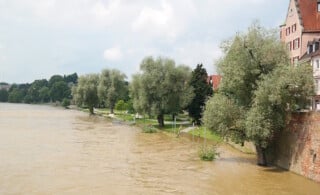
Part of being a homeowner is making sure that it remains safe, even in adverse weather. But what happens when you discover that your home or basement is a flood risk?
In that case, you need to take the right precautions. That includes action to improve basement waterproofing, such as removing mold and fixing causes of water seepage.
It also means finding a pumping mechanism to adequately prevent and manage potential flooding before it happens. To help in that process, here are 4 steps you can take to choose the right sump pump and minimize your flood risk.
1. Evaluate Your Flood Risk
Your home’s location is probably the biggest variable in trying to figure out what type of sump pump you need. Geographic regions with frequent rains or located near coasts tend to be more effected by this type of danger, as do homes built near rivers and streams.
You can take two basic steps to evaluate your flood risk. First, find out how many of your neighbors invest in flood insurance. The more frequently homes around you need to be insured against it, the more likely a flash flood is to occur in the future.
Second, refer to historical flooding trends. FEMA composed a map of counties in the United States most prone to flash flooding over the past two decades. The USGS has also tracked and mapped disaster floods since 2011. Your local environmental agency may have similar, but more targeted data available.
2. Determine Your Electricity Hook-up
The exact location of your sump pump should also play into your consideration. That’s especially true when it comes to your electrical wiring. Sump pumps don’t tend to be battery operated, but you will be able to find some models that you can install even where wiring is not available.
Even where wiring is accessible, it might not be sufficient. A typical sump pump, operating at normal efficiency, will need both a 14-gauge wire and a GFCI outlet (you might recognize it by the two buttons found between its plug-ins). Without the protection provided by GFCI outlets, only smaller models may be safe to install.
3. Assess Your Lifestyle
Most sump pumps will be located in basements, or the lowest part of your home. How you typically utilize that space also plays a part in which sump pump is right for you.
If the pump will live in your finished and frequently used basement, you may want a smaller, quiet model that does not distract from your regular activities. On the other hand, an unfinished basement used only for storage is more receptive to a variety of models.
4. Find the Right Sump Pump
Based on the above three variables, it’s time to find the right pump for your home and your budget. You can choose between a pedestal or submersible sump pump.
- Pedestal pumps include a motor that sits on top of the basin, on a pedestal drawing water up. These usually work best for minor to moderate flooding. They last long, but can be loud and prone to clogging. Homeowners usually pay between $50 and $150, depending on the power of the pump.
- Submersible pumps, on the other hand, include a motor that actually sits in the water basin. As a result, it is quieter, and the product is often more powerful and better for larger floods. At the same time, it will not last as long. Typical costs range from $100 to $400.
Next, it’s time to determine the exact power you need. Areas prone to flooding, as well as large basements, should go with larger motors, which are typically 3/4 horsepower. They’re on the high end of the cost ranges mentioned above.
A final, crucial consideration is whether you need a battery backup. If your basement floods frequently, you need to make sure that if the power goes out, the pump will continue keeping the space dry. Sump pumps with battery backups tend to cost between $150 and $600, depending on the type of pump and the power of the motor.
When it comes to keeping your basement dry, being proactive is key. That includes taking care of not just condensation, but the potential imminent risk that storms and high water bring with them. Choosing the right sump pump can be a crucial step to minimizing your flood risk, and keeping your home safe even in the most adverse conditions.
 Water, Water Everywhere: How to Prevent Flood Damage
Water, Water Everywhere: How to Prevent Flood Damage  Basement Remodeling Costs – Where Does Your Money Go?
Basement Remodeling Costs – Where Does Your Money Go?  Cutting-Edge Kitchen Appliances
Cutting-Edge Kitchen Appliances  Hiring a Basement Contractor: Finishing, Remodeling & Waterproofing
Hiring a Basement Contractor: Finishing, Remodeling & Waterproofing  Selecting Major Appliances
Selecting Major Appliances 

Are You Familiar With This Topic? Share Your Experience.